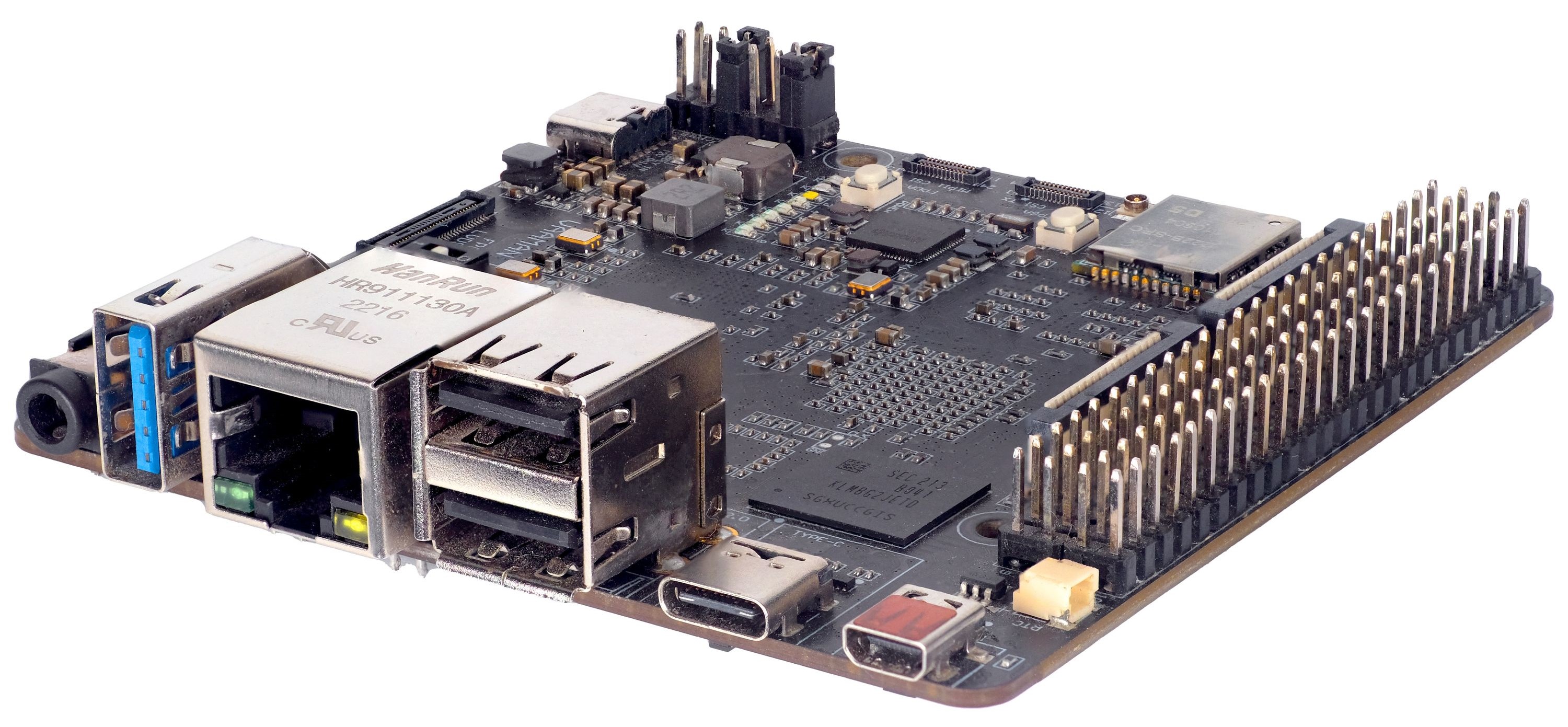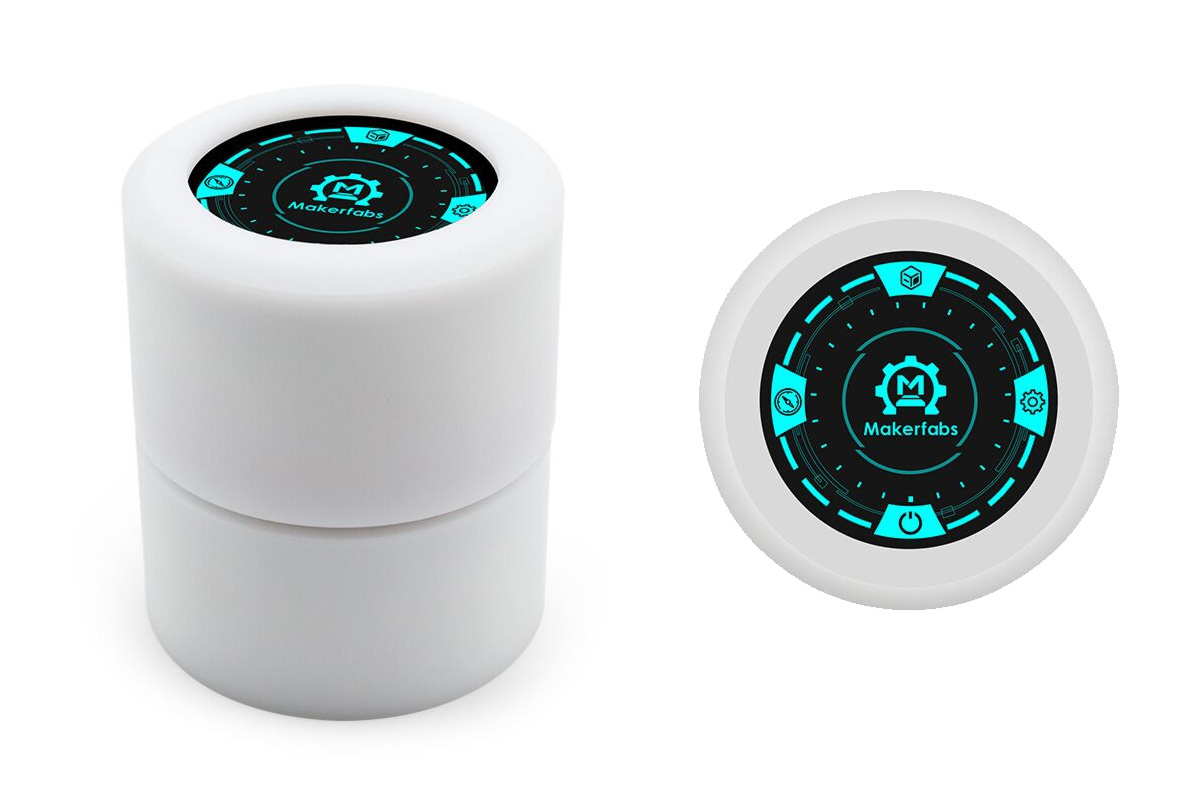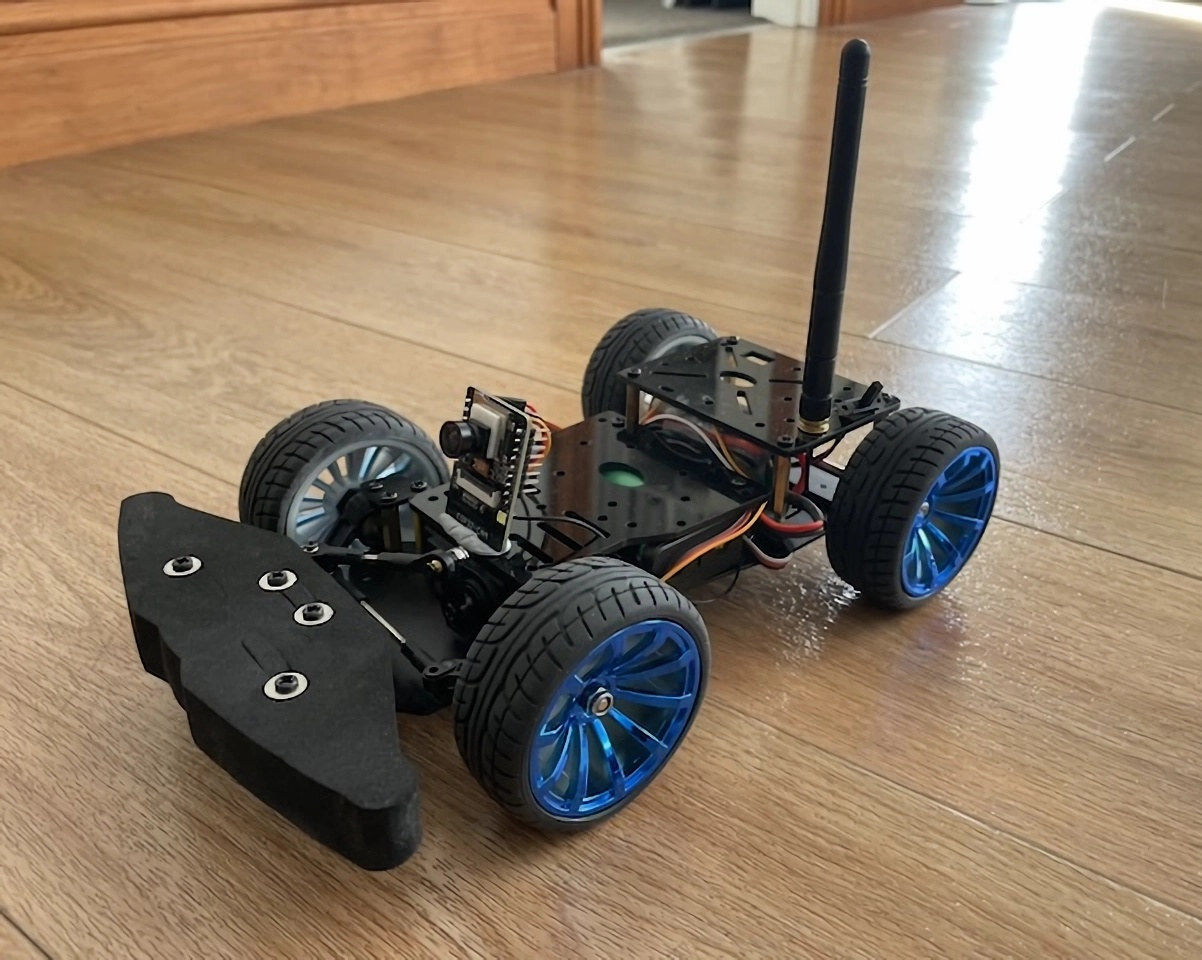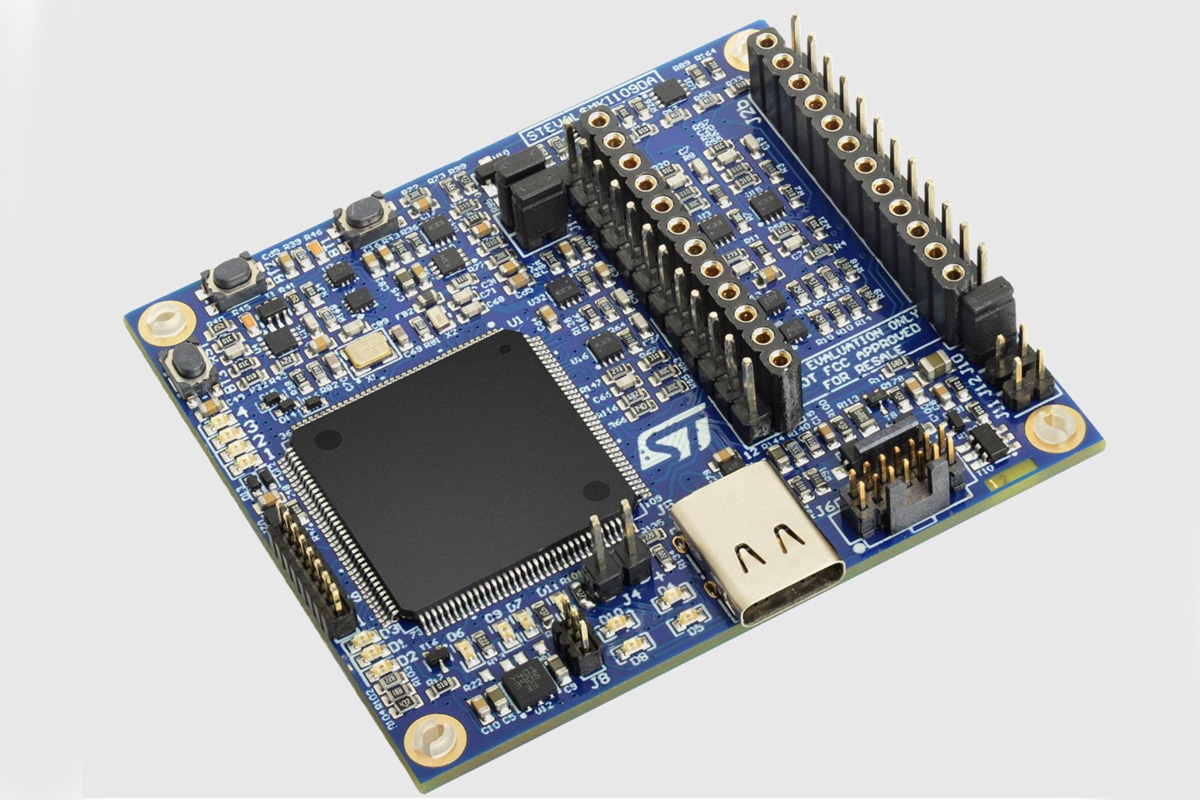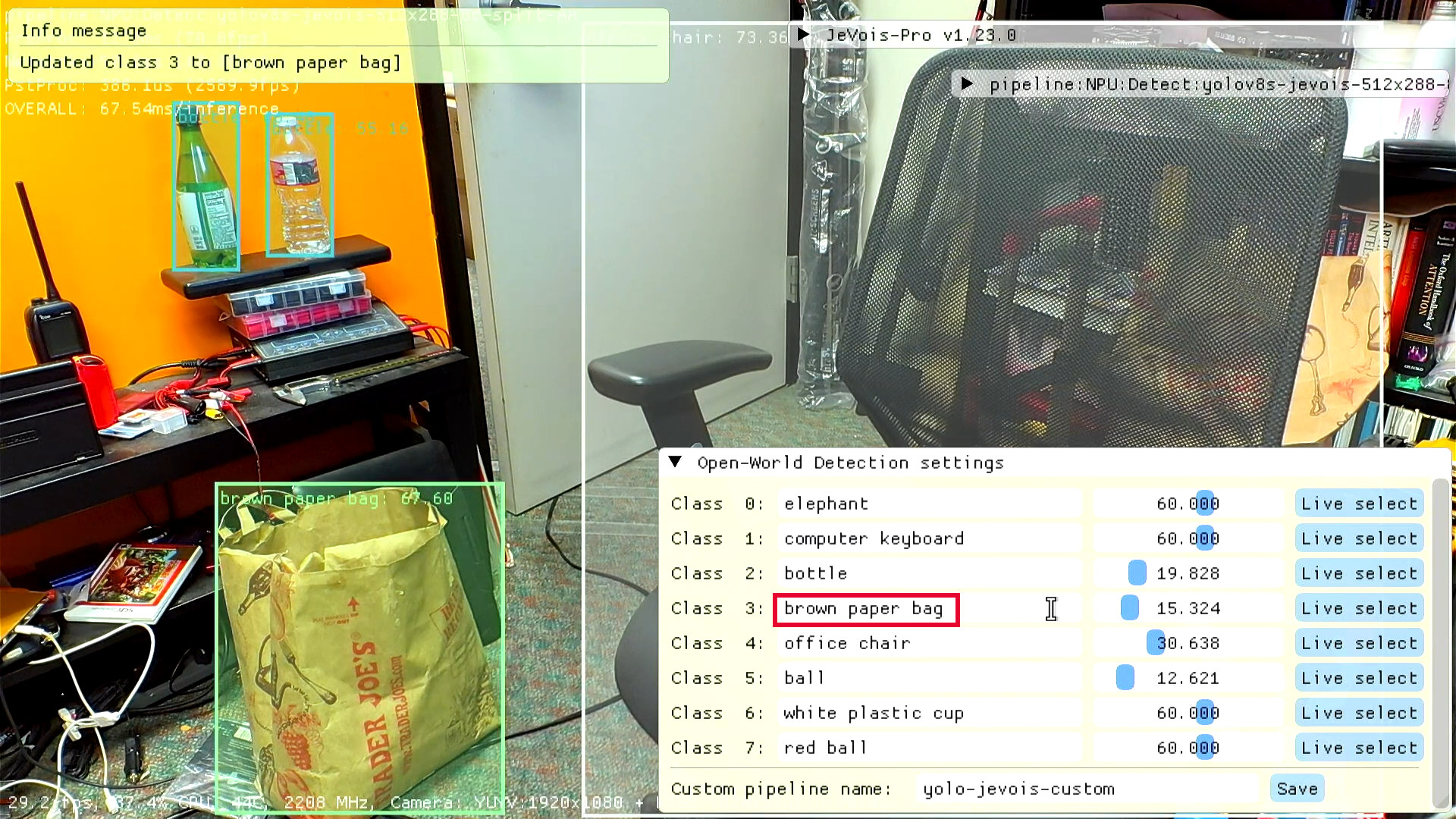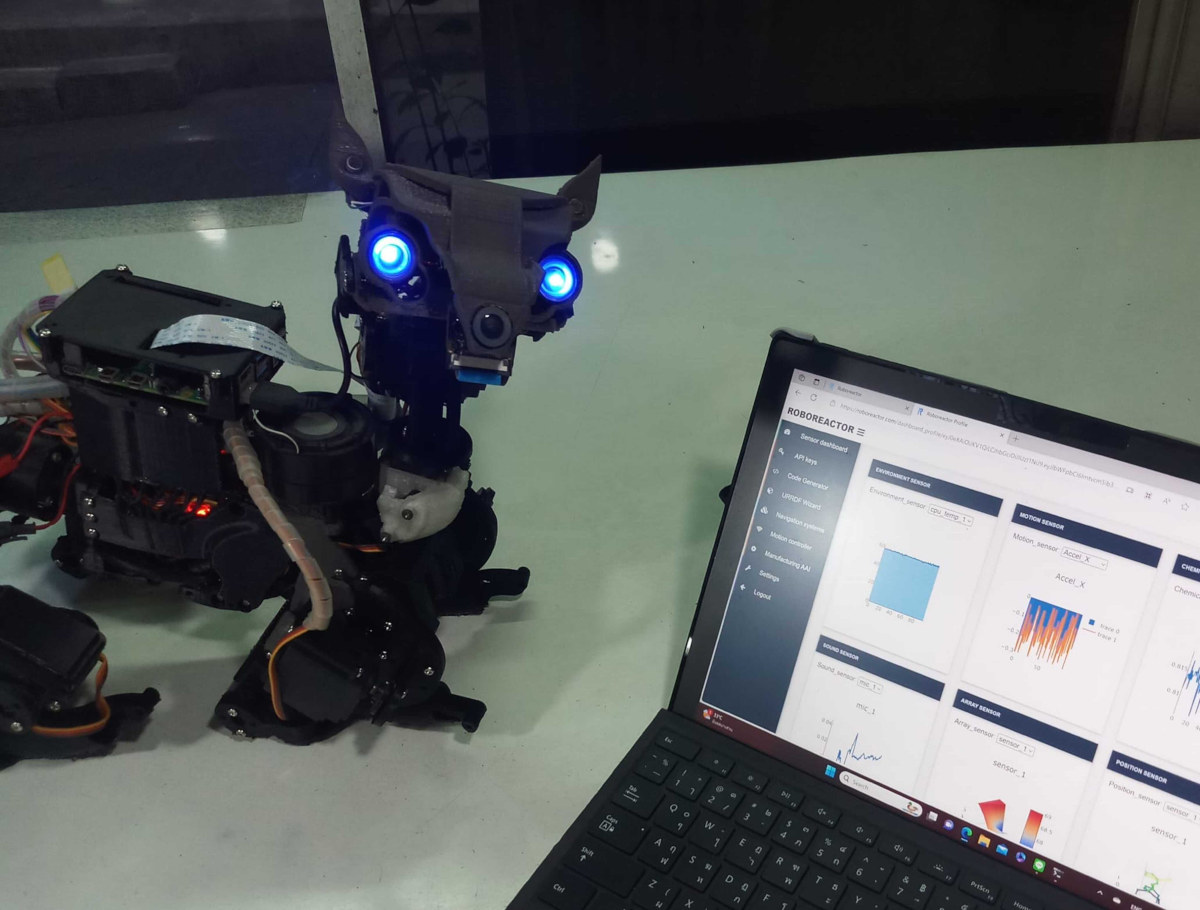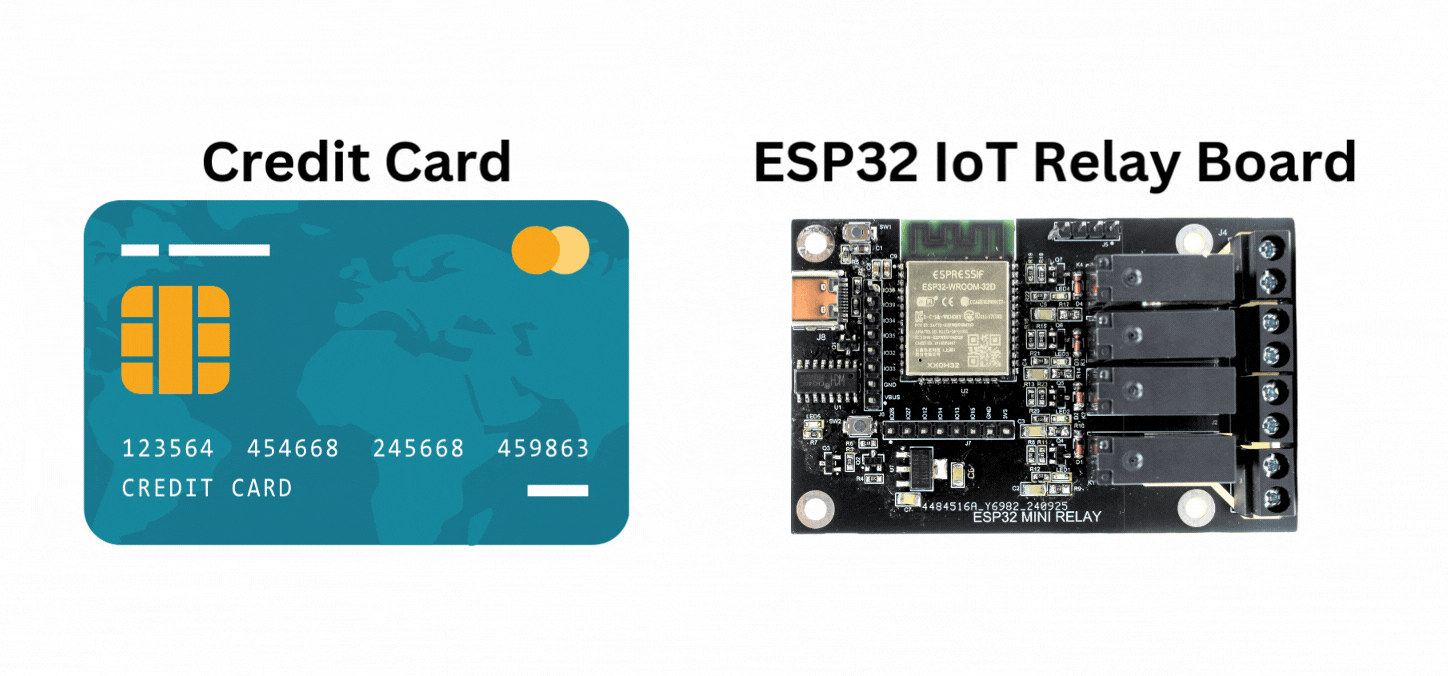Made by Shenzhen SIDIQIAO Technology, the Bapaco is a mechanical keyboard PC powered by an Intel Core i5-1235U 10-core Alder Lake SoC and equipped with a 12.3-inch ultra-wide touchscreen display with 1920×720 resolution. The keyboard PC is offered as a barebone model without memory or storage but supports up to 32GB RAM, an M.2 2280 NVMe SSD, and/or an M.2 2242 SATA 3.0 SSD. It also features an HDMI output to connect an extra display, WiFi 6 connectivity, a few USB ports, and a 3.5mm audio jack and stereo speakers. Bapaco specifications: SoC – Intel Core i5-1235U CPU – 10-core/12-thread hybrid Alder Lake U-Series processor with 2x Performance cores @ 1.3/4.4GHz, 8x Efficient cores @ 0.9/3.3GHz Cache – 12 MB Intel Smart Cache GPU – 80EU Iris Xe Graphics @ 1.2 GHz BPB: 15W System Memory – Up to 32GB DDR4 3200MT/s SO-DIMM single-channel memory Storage M.2 2280 NVMe PCIe […]
Vaaman reconfigurable edge computer features Rockchip RK3399 SoC and Efinix Trion T120 FPGA (Crowdfunding)
Vaaman is a reconfigurable single-board edge computer that integrates a Rockchip RK3399 hexa-core ARM processor with an Efinix Trion T120 FPGA, offering a reconfigurable platform for edge computing applications. The board combines the flexibility of an FPGA with the raw power of a hard processor to create a system capable of adapting to varying computational demands in real time. The compact SBC features the Rockchip RK3399 hexa-core processor with two Cortex-A72 cores and four Cortex-A53 cores, as well as an Efinix Trion T120 FPGA with 112,128 logic elements, interlinked with RK3399 via a high-speed 300Mbps bridge (but it’s unclear how this is implemented). It is billed as a “Raspberry Pi-style board for the FPGA world” that can be used for cryptographic acceleration, software-defined radio (SDR), digital signal processing, real-time robotics, real-time video processing, edge AI deployments, industrial automation, and hardware prototyping. It features a 40-pin Raspberry Pi-compatible GPIO header and […]
MaTouch SmartKnob Assembled ESP32-based rotary knob with touchscreen display sells for $69
Makerfabs has recently released “MaTouch SmartKnob Assembled” based on the SmartKnob View open-source hardware design but enclosed in a plastic case. As a reminder, the SmartKnob View is an ESP32-S3-based DIY rotary knob built around a BLDC motor. With clever software and engineering, the motor is so configured that it can do software configurable detents, haptic feedback, magnetic encoder, and more. It also has a round LCD touchscreen, and USB-C, and features a convenient 3D enclosure that can also be attached to your wall with some sticky pull tabs. The SmartKnob View was a great concept, but its DIY nature made it difficult for many people to get their hands on one as it was never manufactured in quantities. The MaTouch SmartKnob Assembled solves this issue by building upon the original design and comes fully assembled for immediate use. The original module integrates a 240×240 round LCD and uses an […]
Build a four-wheel RC car with ESP32-CAM board and off-the-shelf parts
While there are plenty of ESP32-based wireless-controlled robot cars with a built-in camera, like the PiCar-X 2.0 or Zeus Car, it might be more fun and rewarding to build something yourself. That’s exactly what Matt Sroufe did by building his own RC car using off-the-shelf parts and an ESP32-CAM board and writing firmware for it. To get started with the build, you’ll need six main components: A 4-wheel car chassis – $47.49 on AliExpress Electronic speed controller – $5.27 on AliExpress. Matt selected the 30A version with green PCB. Dual-battery holder for about $2 on AliExpress 2x 18650 3.6V cells or 7.4V batteries purchased locally ESP32-CAM board with an external antenna and the 160° FoV camera – About $14 with board, camera, and external antenna. Bluetooth gamepad such as a PS4 controller The total should be around $80 with the batteries assuming you already own a Bluetooth gamepad. You’ll need […]
STMicro’s STEVAL-MKI109D evaluation board supports all ST MEMS sensors with a DIL24 socket
STMicroelectronics has introduced the STEVAL-MKI109D a MEMS sensor evaluation board, designed to test and optimize STMicro’s MEMS sensors for various applications, including industrial automation, smart agriculture, and consumer electronics. Built around the STM32H563ZI Arm Cortex-M33 MCU this development board features I²C, I3C, and SPI interfaces, along with a TDM interface for high-speed sensor data communication. The board is also compatible with STMicro MEMS DIL24 adapter boards, which makes it easy for engineers to test different sensors. Additionally, it has software-adjustable power circuitry (0–3.6V), and onboard power monitoring for accurate analysis of sensor performance. STEVAL-MKI109D specifications Main MCU – STMicro STM32H563ZI Arm Cortex-M33 MCU with DSP and FPU Storage – MicroSD card slot Sensors – Supports all STMicro MEMS DIL24 compatible adapter boards Interfaces – I²C, I3C, SPI, TDM USB – USB Type-C connector for power and programming Misc Onboard J6 connector for STM32 programming and debugging Onboard J9 connector for […]
YOLO-Jevois leverages YOLO-World to enable open-vocabulary object detection at runtime, no dataset or training needed
YOLO is one of the most popular edge AI computer vision models that detects multiple objects and works out of the box for the objects for which it has been trained on. But adding another object would typically involve a lot of work as you’d need to collect a dataset, manually annotate the objects you want to detect, train the network, and then possibly quantize it for edge deployment on an AI accelerator. This is basically true for all computer vision models, and we’ve already seen Edge Impulse facilitate the annotation process using GPT-4o and NVIDIA TAO to train TinyML models for microcontrollers. However, researchers at jevois.org have managed to do something even more impressive with YOLO-Jevois “open-vocabulary object detection”, based on Tencent AI Lab’s YOLO-World, to add new objects in YOLO at runtime by simply typing words or selecting part of the image. It also updates class definitions on […]
Roboreactor – A Web-based platform to design Raspberry Pi or Jetson-based robots from electronics to code and 3D files
Roboreactor is a web-based platform enabling engineers to build robotic and automation systems based on Raspberry Pi, NVIDIA Jetson, or other SBCs from a web browser including parts selection, code generation through visual programming, and generating URDF models from Onshape software. You can also create your robot with LLM if you wish. The first step is to create a project with your robot specifications and download and install the Genflow Mini image to your Raspberry Pi or NVIDIA Jetson SBC. Alternatively, you can install Gemini Mini middleware with a script on other SBCs, but we’re told the process takes up to 10 hours… At this point, you should be able to access data from sensors and other peripherals connected to your board, and you can also start working on the Python code using visual programming through the Roboreactor node generator without having to write code or understand low-level algorithms. Another […]
Credit card-sized quad relay board runs Tasmota firmware on ESP32 module (Crowdfunding)
The “ESP32 IoT Relay Board” is a credit card-sized ESP32 board with four small 250VAC/30VDC 7A relays that runs Tasmota open-source firmware and supports Alexa & Google Assistant for voice control. There are so many ESP32-based relay boards on the market that I don’t usually feel the need to cover new ones, but Igor Mileshin’s ESP32 IoT Relay Board is smaller than most so I thought it might be interesting to some. The smallest quad-channel relay board I’ve seen so far is the one by Seeed Studio using an STM32 MCU and solid-state relays that measures just 60 x 40mm, but the relays only support up to 2A. ESP32 IoT Relay Board specifications: Wireless module – ESP32-WROOM-32D SoC – Espressif ESP32-D0WD dual-core Tensilica LX6 processor @ 240 MHz Storage – 32Mbit SPI flash Connectivity – Wi-Fi 802.11 b/g/n up to 150 Mbps, Bluetooth 4.2/5.x LE Relays 4x “industrial-grade” relays supporting […]



